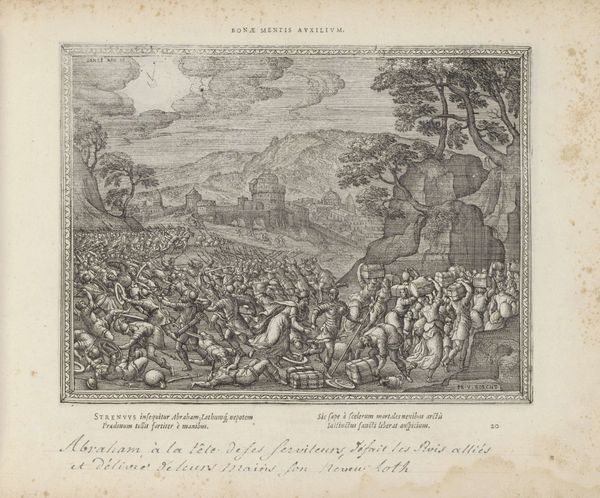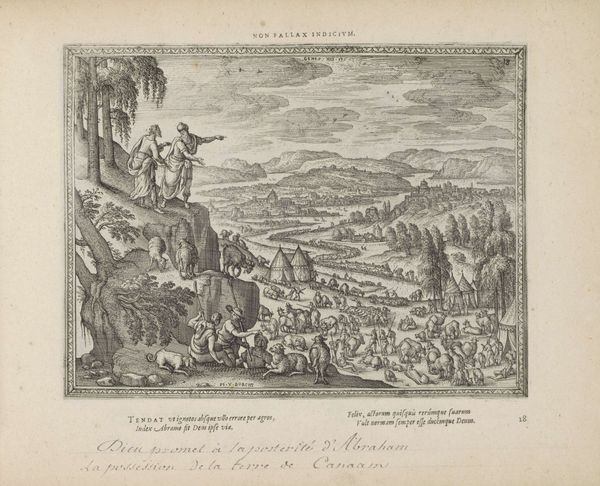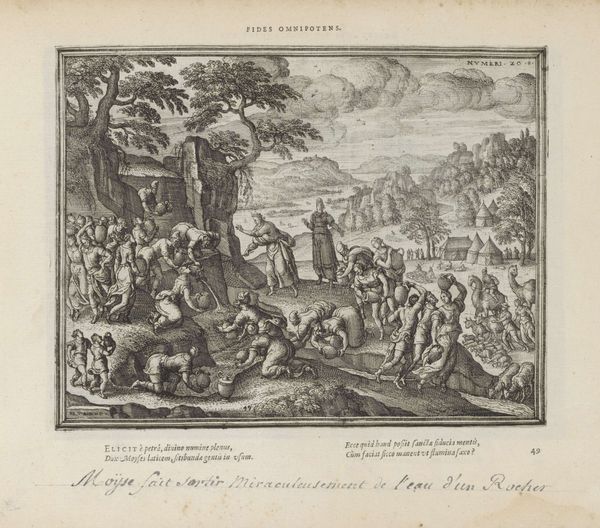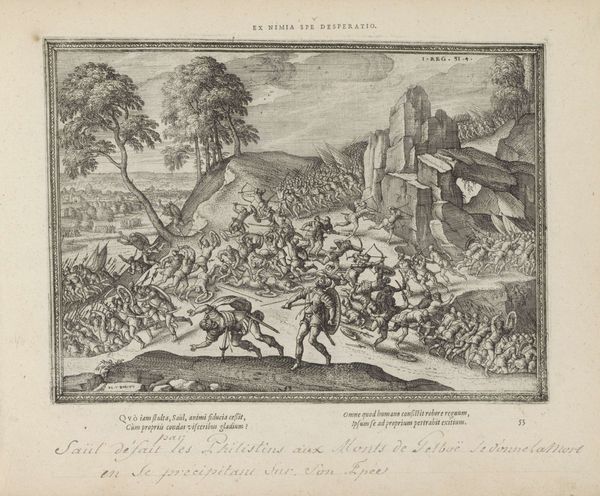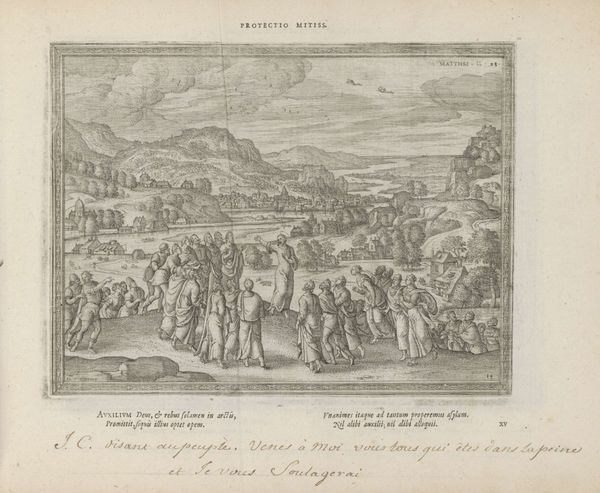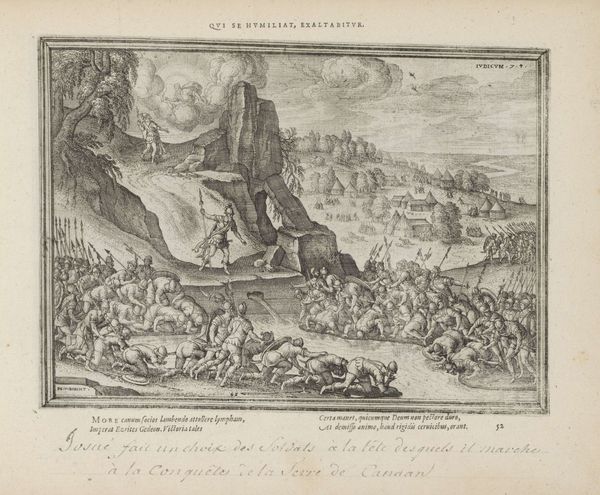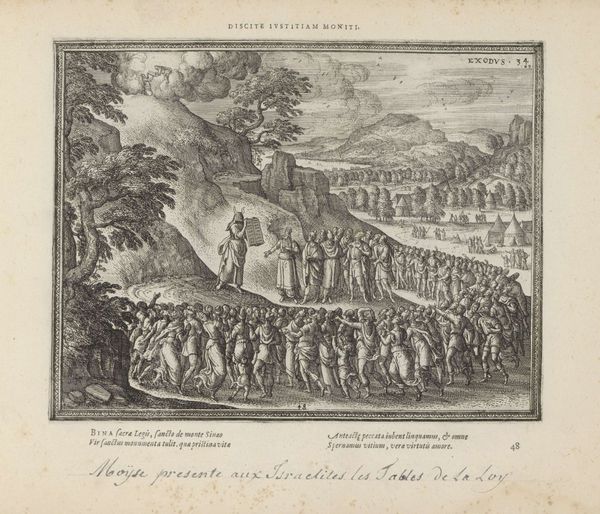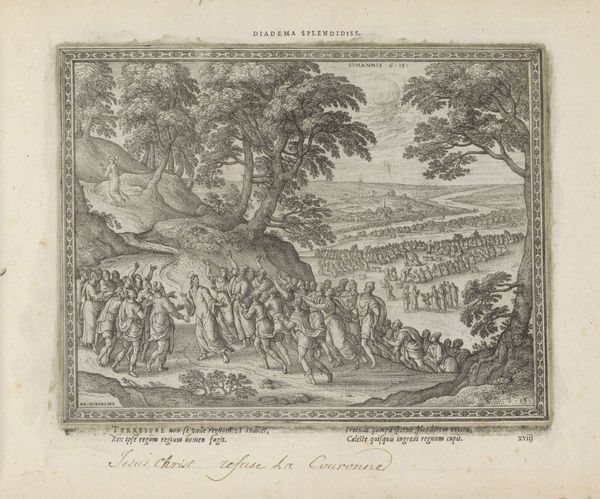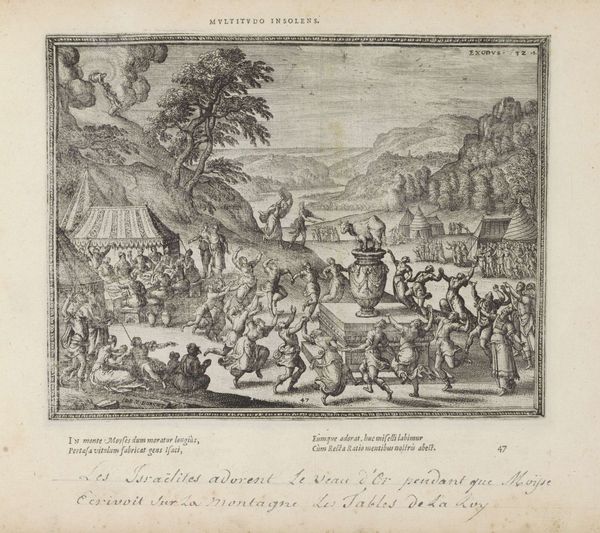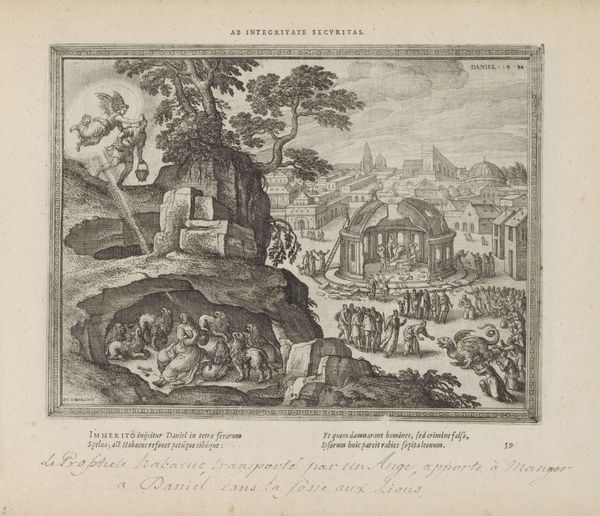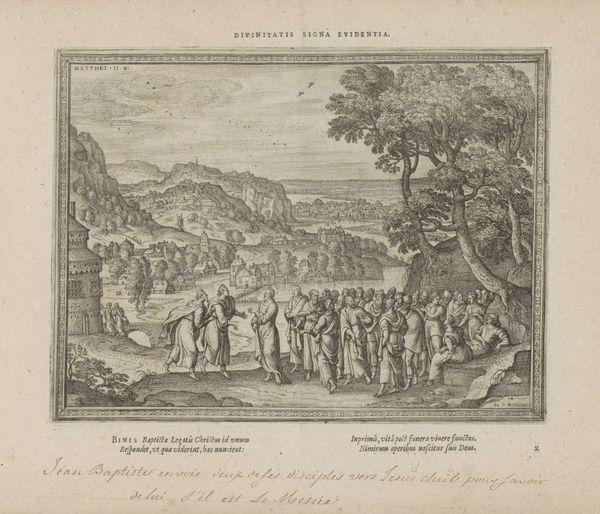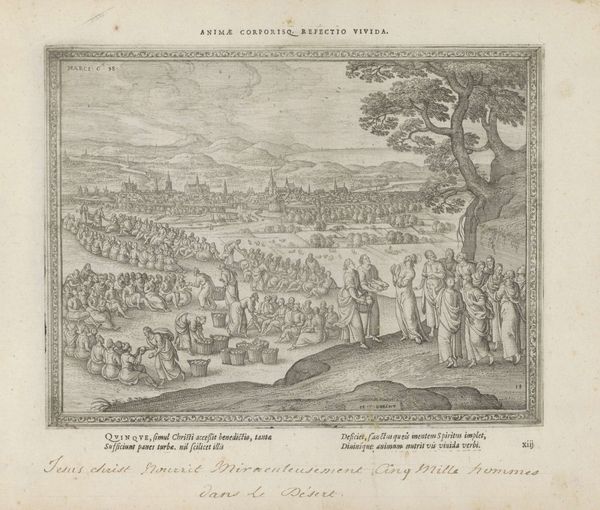
print, engraving
# print
#
old engraving style
#
11_renaissance
#
history-painting
#
northern-renaissance
#
engraving
Dimensions: height 186 mm, width 246 mm
Copyright: Rijks Museum: Open Domain
Curator: This engraving, "Lot being led away from Sodom," made sometime between 1582 and 1613 by Pieter van der Borcht I, presents a captivating scene, doesn’t it? The detail achieved with engraving is impressive. Editor: It really is! The sheer amount of labor to create all these fine lines... It’s so busy, and it’s hard to know where to look first! How do you read a piece like this from a materialist perspective? Curator: Think about the function of printmaking during this period. It’s all about reproducibility and distribution, making images accessible to a wider audience beyond the wealthy elite. Consider what that says about the demand for religious or historical narratives during this era, and how it democratizes knowledge. Editor: So the medium itself affects the message? Because unlike, say, an oil painting commissioned by a single patron, this print would have been disseminated much more widely? Curator: Exactly. The value lies not just in the artistry but in the mechanics of its production. Van der Borcht I's studio would have been like a small factory. Now look at the details of the figures. Are they idealized, or do you see traces of everyday life reflected in them? What about the representation of violence; how does the medium influence its depiction? Editor: The violence seems somewhat distanced. Because it’s engraving, it's like seeing it through a filter – a step removed from direct experience, unlike some more graphic paintings I've seen. Curator: Precisely. This distance changes our relationship with the event. It makes us consider what societal role works like these played. How they maybe weren’t so much about realistic horror, as teaching some sort of lesson. The wide availability makes me see this work less about Van der Borcht and more about that wide, religious society in which it existed. Editor: That's a totally different way of looking at art than I'm used to! Shifting the focus away from the individual artist toward production processes and wider social context makes the art seem almost like a historical document, but also highlighting how that document isn’t entirely factual either. Thanks. Curator: And recognizing the historical impact the material of distribution might’ve had is vital too. Thinking about these aspects truly expands our appreciation.
Comments
No comments
Be the first to comment and join the conversation on the ultimate creative platform.
